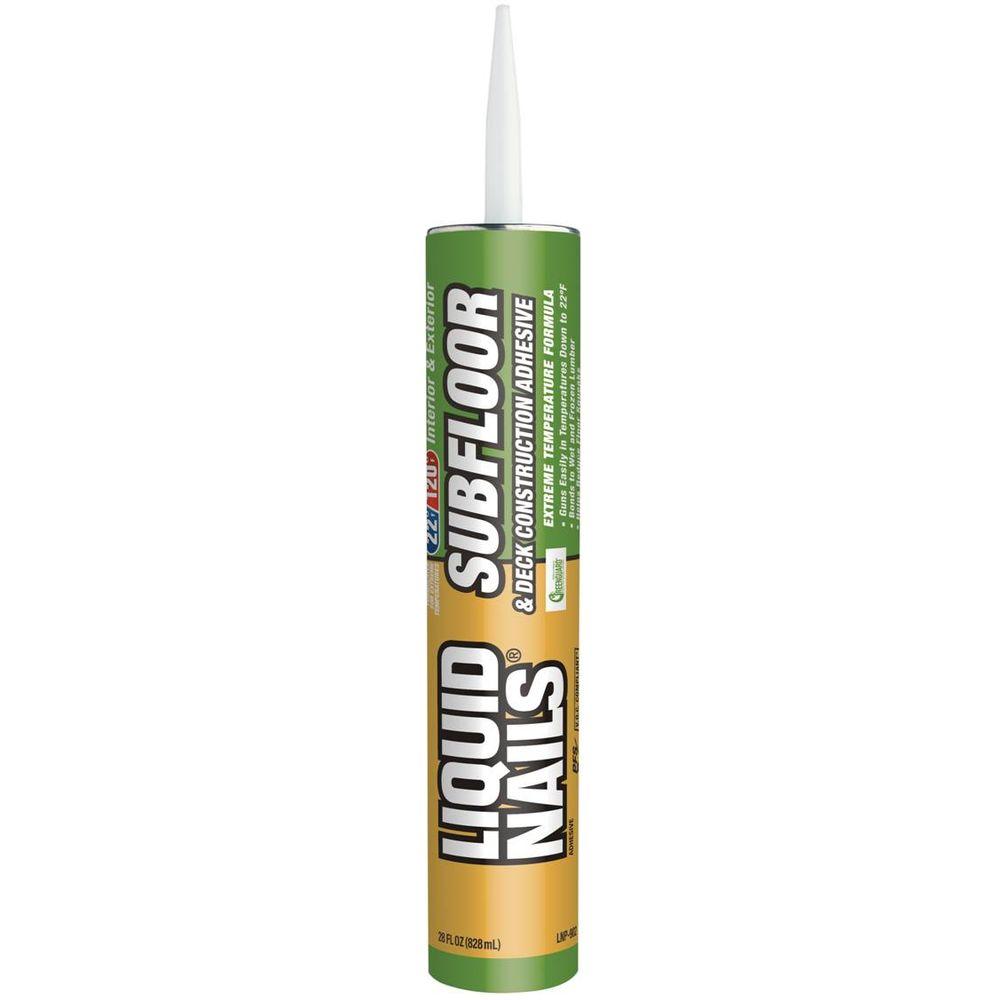


Mark Stypczynski, PPG manager, technical specifications, adhesives and sealants, architectural coatings, said, “Fuze*It construction adhesive can adhere even metal to metal or most plastics to most plastics with an instant hold, fast cure, and a long-lasting bond. “With Fuze*It All Surface adhesive, contractors and DIYers alike can rely on one product to handle nearly every job, no matter what materials they are using,” said Mark Hembree, PPG senior marketing manager, adhesives and sealants, architectural coatings. A detachable nozzle is included for easy cleaning for reuse. plastic cartridge so packaging will not be damaged when left in the rain or snow, even overnight. Liquid Nails Fuze*It does not foam in high temperatures or high humidity, which typically leads to weak spots. Application temperatures range from 0☏ to 140☏ and service temperatures from -40☏ to 300☏ on surfaces that are dry, frozen, or wet. In addition, the product is easy to apply to all surfaces (except polyethylene and polypropylene) in low temperatures and is heat resistant. This allows for faster job completion and less opportunity for parts to move or shift, creating a better and more reliable bond. Liquid Nails Fuze*It adhesive features an instant-grab technology, while still allowing for repositioning, and provides fast strength development. Formulated with a proprietary hybrid-polymer blend for best-in-class adhesion, it provides two times the strength of fasteners alone and bonds nearly all materials (e.g., glass, metal, tile, ceramic, granite, wood, marble, rubber) in any weather conditions. While for wood glue, soap and water will usually suffice.FUZE*IT® (LN-2000) from LIQUID NAILS®, a PPG brand, is a heavy duty construction adhesive. Most of the time, you’ll have to use oil or petroleum jelly to pry it off.
#LIQUID NAILS DRY TIME SKIN#
When the latter sticks in your skin or on any surface, it can be difficult to remove. Wood glue is definitely easier to clean up than liquid nails. So if you’re working with liquid nails, make sure you do it in an open, well-ventilated space. These solvents are also flammable when it’s not yet completely dry. While some liquid variants contain solvent-based ingredients so they emit toxic fumes when wet. Most wood glues are made of PVA so it’s generally safe even if you’re working in poorly-ventilated spaces. Even if you pry the two joined surfaces apart, they’ll break at some other point but not on the part where the liquid nail is applied. As long as you follow the application instructions properly especially the drying time, you’ll get unbeatable bonding results. So, naturally, it has stronger bonding properties than wood glue. It’s great at joining things together but it doesn’t exactly make a practical gap-filler.Īs we’ve said, liquid nails are formulated for construction.
#LIQUID NAILS DRY TIME CRACK#
You see, liquid nails become brittle over time and will crack into chunks. But the same cannot be said for liquid nails. More than just a bonding agent, wood glue with sawdust also works wonders on sealing wood gaps. While wood glue works best for DIYs and arts and crafts. So you’ll have no problem using it even on concrete to concrete. As we’ve mentioned, liquid glue is formulated especially for heavy-duty construction work.

#LIQUID NAILS DRY TIME INSTALL#
For example, you can’t use wood glue to install paneling and tileboard. But those surfaces are rather limited when compared with liquid glue. Yes, wood glue can be used on multiple surfaces despite its name. Depending on the humidity and the porosity of the surface, some projects may even take weeks before you can do further work. So you may only have to wait for a couple of hours for it to completely dry.Ī liquid nails’ drying time, on the other hand, is usually at least 24 hours.

Some wood glues, however, have faster drying times. But you’ll have to wait 24 hours before putting pressure to the joined surfaces. Depending on the type and brand, it only takes about 30 minutes to an hour for the wood glue to dry. If you’re in a hurry or want a quick fix, wood glue is your best friend. wood glue based on these factors in this ultimate face-off: Drying Time To help you make an informed choice, we’ll compare liquid nails vs. So which between them is better depends on your needs. Just like most things, there are pros and cons to using liquid nails and wood glue. But contrary to its name, wood glue is not just for woods. Wood glue, on the other hand, is a generic term for adhesives used mainly for woodworking. Most of which are specially formulated for heavy construction work. Liquid nails is actually a brand for a wide range of construction adhesives. After all, they serve the same purpose: to stick things together.īut aside from their adhesive function, they pretty much have nothing in common. For most DIYers, liquid nails and wood glue might sound interchangeable.


 0 kommentar(er)
0 kommentar(er)
